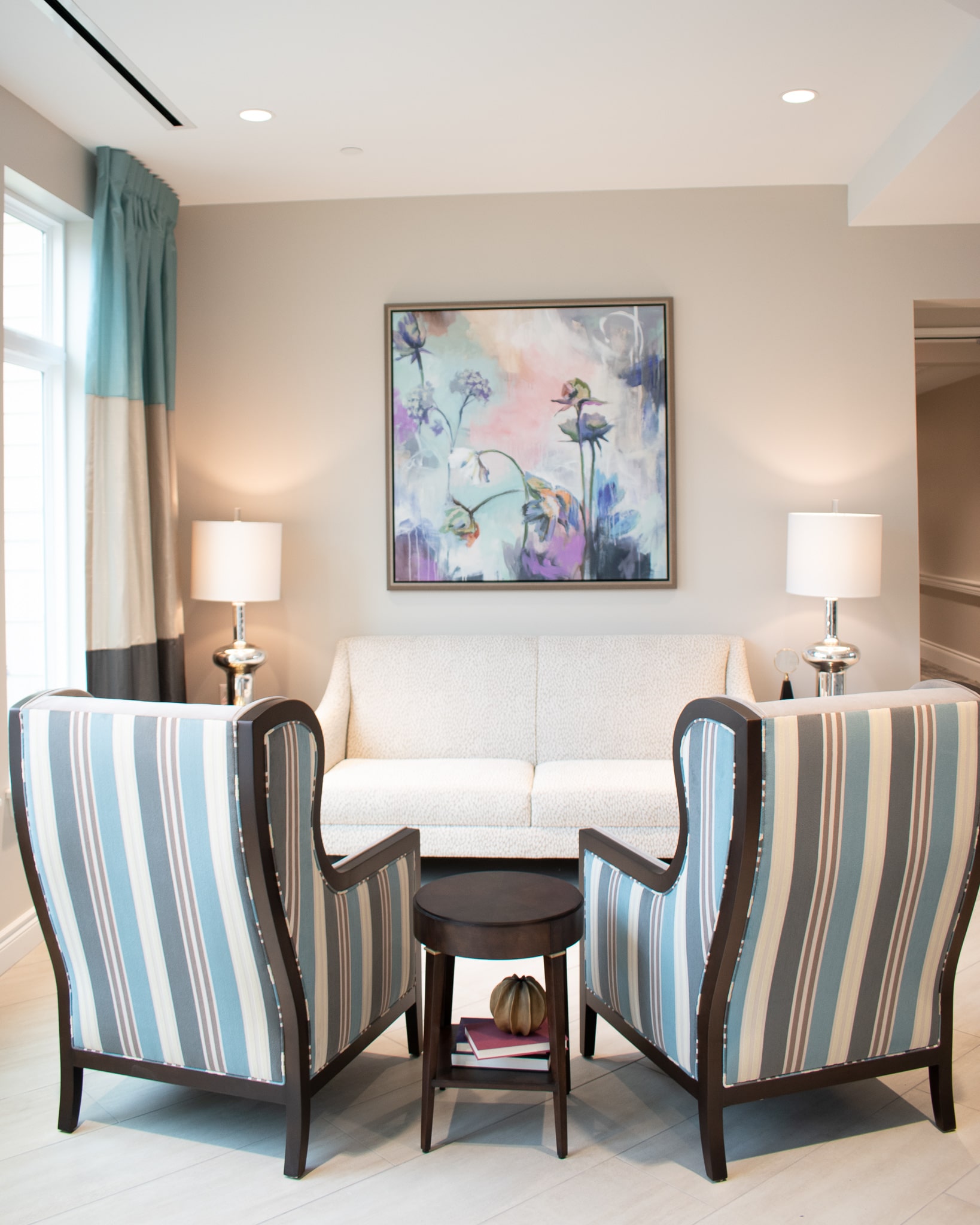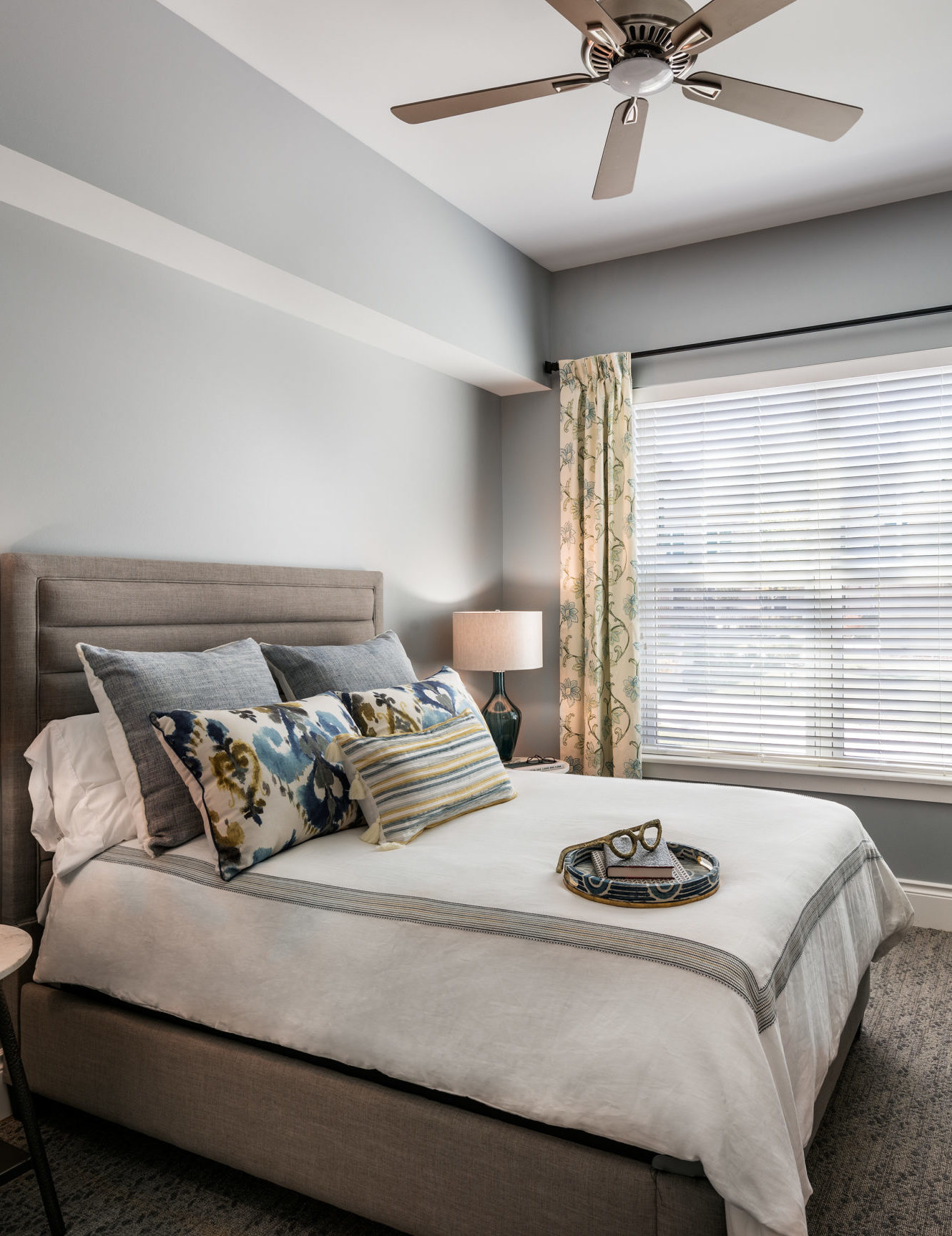While there is a lot of new research being conducted in anti-microbial finishes for hospitals and healthcare settings, there are a few easy finishes that can be implemented in senior living design. Crypton and other fabrics like “incase” have fibers that are inherently anti-microbial. They are also the only fabrics “sanctioned as disinfect able by the EPA.” These fabrics are also stain-resistant with integrated permanent liquid barriers that help with ease of cleaning any messes that could arise. Additionally, there are quite a few paint brands that are creating anti-microbial finishes. Sherwin Williams, among others, has Paint Shield which is the first paint that kills 99.9% of bacteria, including Staph (Staphylococcus aureus) and E. coli (Escherichia coli), within two hours of exposure on a painted surface. Finishes like this are vital throughout the communities, specifically on high-touch, high traffic areas like handrails.



